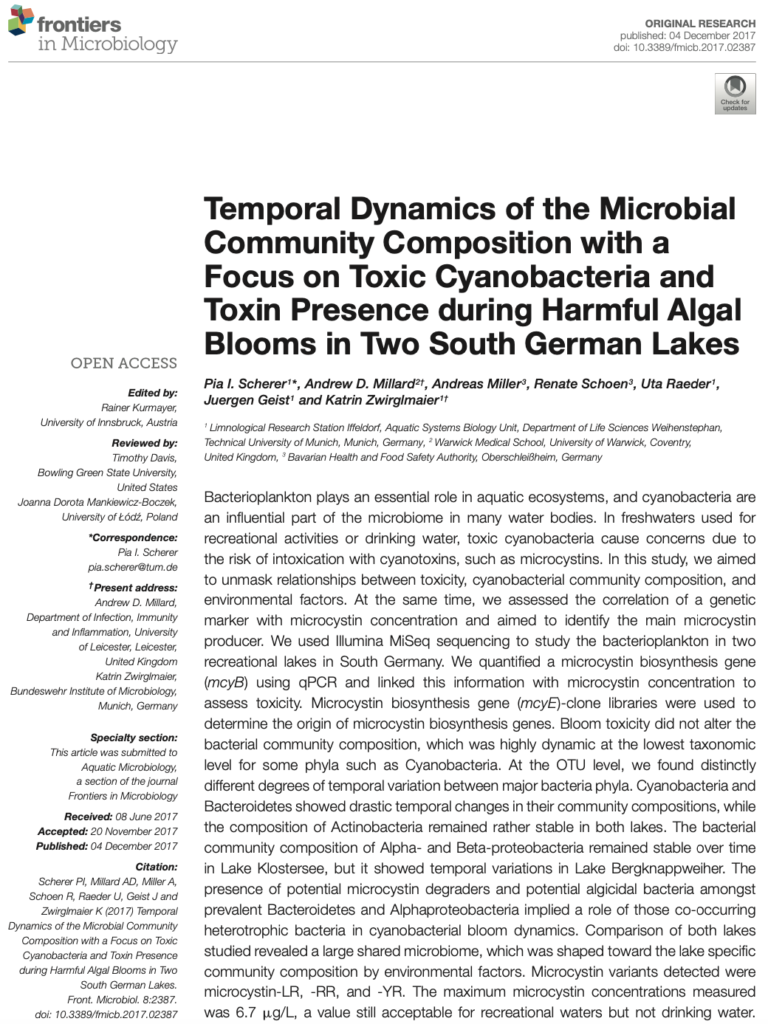Temporal Dynamics of the Microbial Community Composition with a Focus on Toxic Cyanobacteria and Toxin Presence during Harmful Algal Bloom in Two South German Lakes
Pia Scherer, Andrew Millard, Andreas Miller, Renate Schoen, Uta Raeder, Juergen Geist and Katrin Zwirglmaier|Limnological Research Station Iffeldorf, Aquatic Systems Biology Unit, Department of Life Sciences Weihenstephan, Technical University of Munich, Munich, Germany’ Warwick Medical School, University of Warwick, Coventry, United Kingdom; Bavarian Health and Food Safety Authority, Oberschleibhiem, Germany|Frontiers in Microbiology|2017| 8:2387 doi: 10.3389/fmicb.2017.02387
Cyanobacteria occur in aquatic environments and are capable of producing the hepatoxic secondary metabolite microcystin. These metabolites cause problems in drinking and recreational water reservoirs. As a result, it is important to identify potential microcystin-producing species to assess the risk associated with toxic cyanobacteria. In this study, the correlation of a genetic marker with microcystin concentration was assessed and the main microcystin producer was identified. Surface water samples were taken from one near shore sampling point of two recreational lakes in South Germany. The DNA was isolated using a phenol-chloroform based method. A microcystin biosynthesis gene (mycB) was identified using qPCR and was linked with microcystin concentration to assess toxicity. A five-fold serial dilution was performed, and a standard curve was used to quantify the gene copies. Microcystin biosynthesis gene mcyE-clone libraries were used to determine the origin of microcystin biosynthesis genes using next generation sequencing. It was shown that mcyB gene copy number correlated positively with microcystin concentration and that Microcystis sp. was the sole microcystins producer. This study was the first time high-throughput sequencing was used to reveal differential temporal variations in the microbial community composition during toxic cyanobacterial blooms in two lakes in South Germany, revealing that the microcystin producing species never dominated the bloom.
